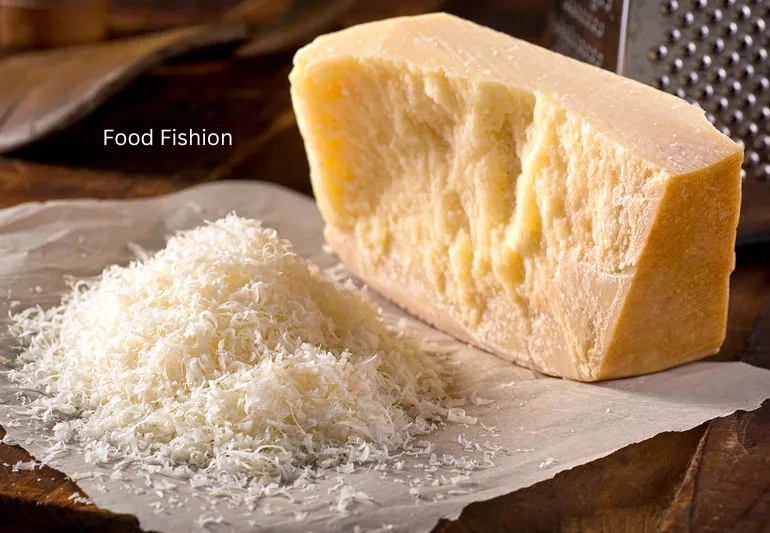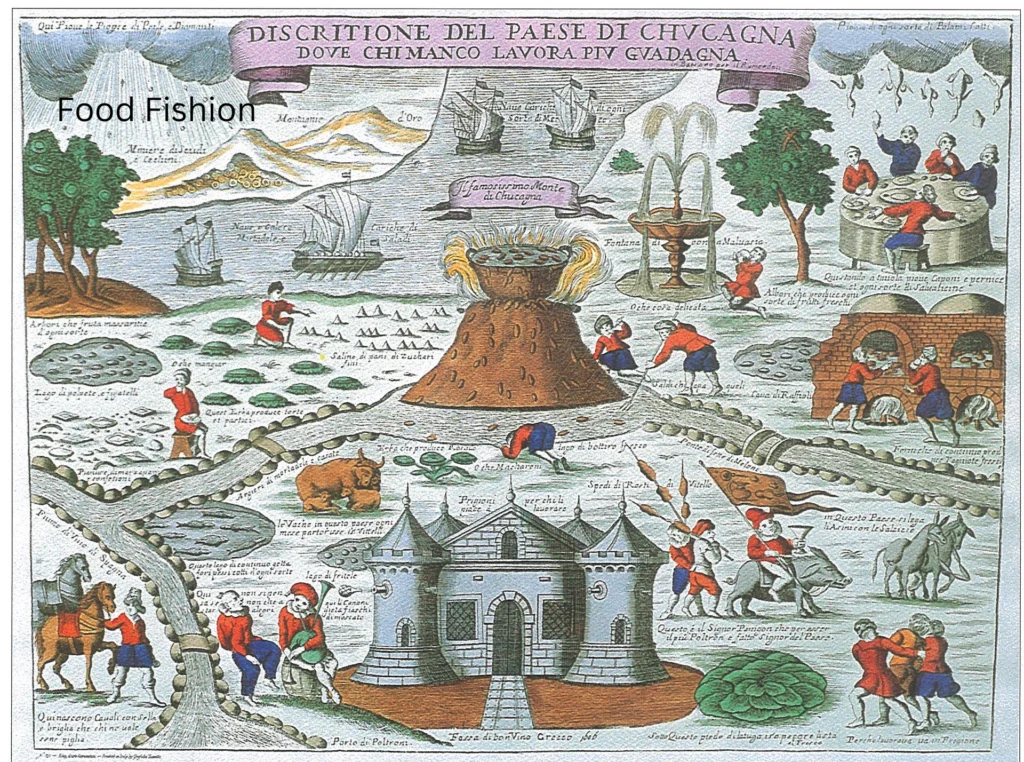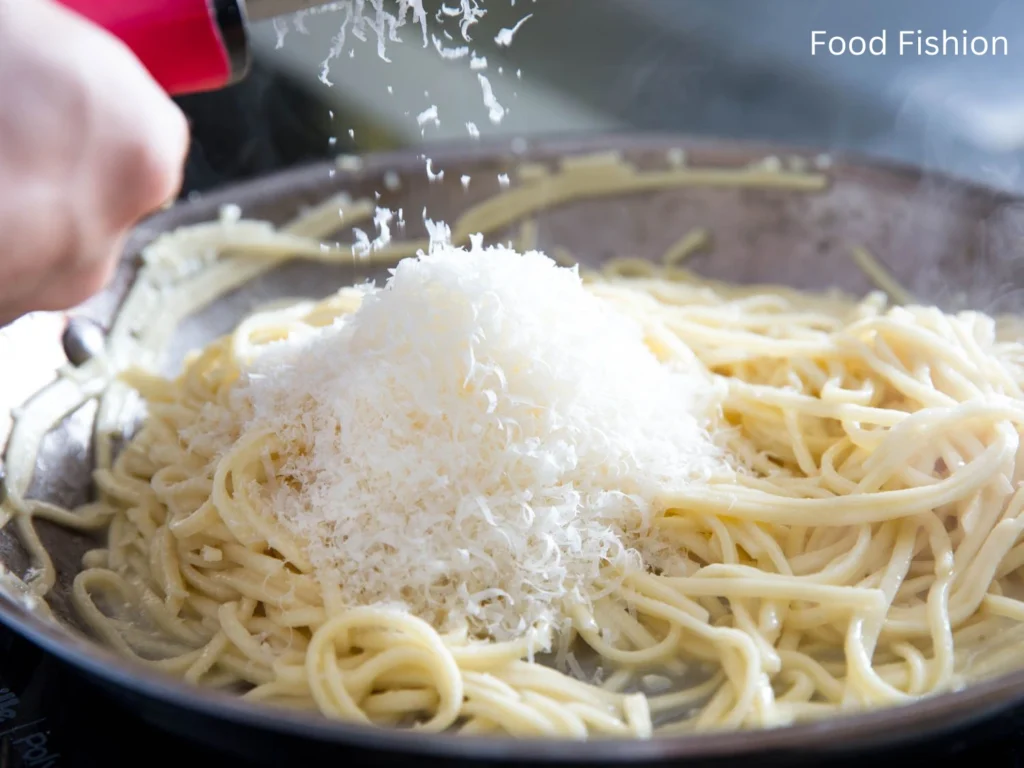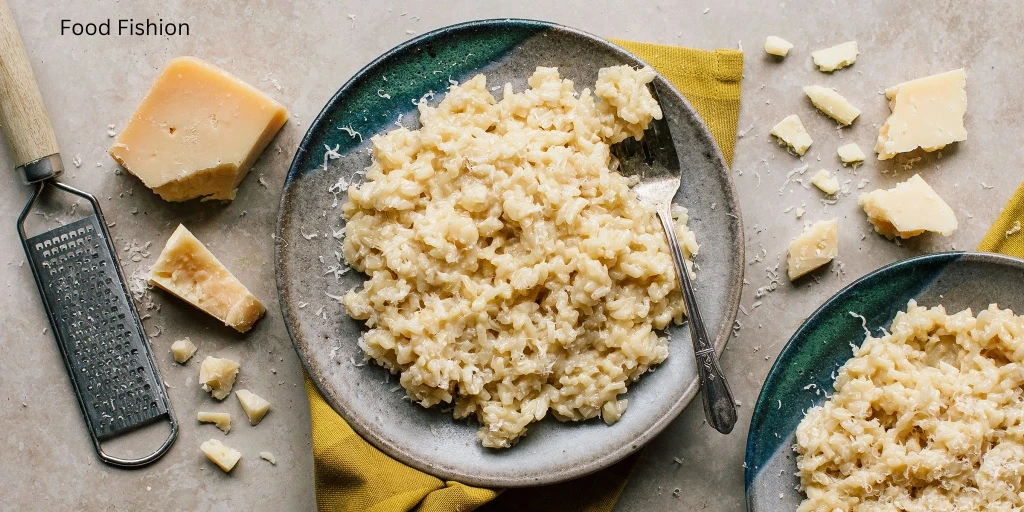Parmesan Cheese :
Parmesan cheese, also known as Parmigiano-Reggiano, is one of the most famous cheeses in the world. With its rich, nutty flavor and hard texture, it has become a favorite ingredient in many dishes. Whether you grate it over pasta, shave it onto salads, or enjoy it on its own, Parmesan adds a unique taste that enhances any meal. In this blog, we will explore everything about Parmesan cheese, including its history, production process, nutritional benefits, and how to use it in your cooking.

The History of Parmesan Cheese :
People have been making Parmesan cheese for nearly 900 years. It originated in Italy, particularly in the regions of Parma, Reggio Emilia, Modena, and parts of Bologna and Mantua. The cheese gets its name from these regions, with “Parmigiano” referring to Parma and “Reggiano” referring to Reggio Emilia.
Monks in the Middle Ages first started making Parmesan cheese to preserve milk for long periods. They discovered that by using certain methods, they could create a hard cheese that aged well and developed a strong flavor over time. Today, artisans still follow traditional methods to make Parmesan cheese, and Italian law strictly controls its quality.

How Parmesan Cheese is Made :
The production of Parmesan cheese requires time and careful monitoring. Here’s how artisans make it:
- Milk Collection: Farmers collect fresh cow’s milk from the designated regions.
- Curd Formation: Cheesemakers mix the milk with natural whey and rennet, which helps it curdle.
- Cutting and Cooking: They cut the curds into small pieces and heat them to a specific temperature.
- Molding and Salting: They place the curds into round molds and soak them in a saltwater solution for several weeks.
- Aging: The cheese wheels age for a minimum of 12 months and sometimes up to 36 months or more.
- Inspection: Experts check the quality of each wheel before labeling it as Parmigiano-Reggiano.
As Parmesan cheese ages, its flavor becomes more complex. Younger Parmesan (12-18 months) tastes mild and creamy, while older Parmesan (24-36 months) becomes harder and develops a stronger, more crumbly texture.
Nutritional Benefits of Parmesan Cheese :
Parmesan cheese is not only delicious but also packed with nutrients. Here are some of its health benefits:
- High in Protein: Parmesan provides an excellent source of protein, which helps in muscle growth and repair.
- Rich in Calcium: This cheese contains plenty of calcium, which strengthens bones and teeth.
- Good for Digestion: Because Parmesan ages for a long time, it has very little lactose, making it easier to digest.
- Full of Vitamins: It contains important vitamins like A, B12, and D, which support overall health.
- Low in Carbohydrates: Parmesan cheese has almost no carbohydrates, making it a great choice for low-carb diets.
How to Use Parmesan Cheese in Cooking
Parmesan cheese serves as a versatile ingredient in many different ways. Here are some ideas:
1. Grated Over Pasta :
One of the most popular ways to enjoy Parmesan is to grate it over pasta dishes like spaghetti, fettuccine Alfredo, or lasagna. The cheese melts slightly, adding a rich and savory taste.

2. Sprinkled on Salads :
Shaved or grated Parmesan adds a delicious crunch and umami flavor to salads. It pairs well with Caesar salad, arugula salad, and mixed greens with balsamic dressing.

3. Used in Soups :
Adding Parmesan to soups like minestrone or tomato soup enhances their depth of flavor. You can also use the cheese rind to simmer in soups for extra taste.

4. Made into Crisps :
Baking small piles of grated Parmesan in the oven creates crispy cheese chips that make a great snack or topping for soups and salads.

5. Served with Fruits and Nuts :
Parmesan cheese pairs wonderfully with fruits like pears and apples, as well as nuts like walnuts and almonds. This combination makes for a simple yet elegant appetizer.

6. Included in Risottos :
Parmesan plays a key role in risottos, adding creaminess and depth of flavor. Just stir in some grated Parmesan before serving for a perfect finish.

7. Stuffed in Meat Dishes :
Many meat dishes, such as chicken Parmesan or stuffed chicken breasts, use Parmesan cheese for an extra burst of flavor.

How to Store Parmesan Cheese :
To keep Parmesan cheese fresh and flavorful, follow these storage tips:
- Wrap it Properly: Wrap Parmesan in wax paper or parchment paper, then place it in an airtight container or plastic bag.
- Keep it in the Refrigerator: Store Parmesan in the fridge at a temperature between 4-8°C (40-45°F).
- Avoid Moisture: Excess moisture can cause mold. If mold appears, simply cut off the affected area and use the rest.
- Freeze for Long-Term Storage: If you won’t use Parmesan for a while, freeze it. Grate it before freezing for easy use.
Fun Facts About Parmesan Cheese :
- People call Parmesan cheese the “King of Cheeses” because of its long history and high-quality production.
- A single wheel of Parmesan can weigh up to 40 kg (88 lbs)!
- Banks in Italy have accepted Parmesan as collateral for loans because of its value.
- Authentic Parmigiano-Reggiano has a special dotted inscription on the rind to show its origin.
- Cheesemakers need about 550 liters of milk to produce one wheel of Parmesan cheese.
How to Identify Real Parmesan Cheese :
Because Parmesan is so popular, many imitations exist in the market. To ensure you get real Parmigiano-Reggiano, look for these signs:
- Origin Marking: Authentic Parmesan has the name “Parmigiano-Reggiano” stamped on the rind.
- PDO Label: The European Union grants it a “Protected Designation of Origin” (PDO) status, meaning only cheese made in specific regions of Italy qualifies as true Parmesan.
- Strong, Nutty Smell: Real Parmesan has a rich aroma, while imitations may lack depth in smell and taste.
Conclusion :
Parmesan cheese remains a beloved ingredient with a rich history, unique production process, and amazing flavor. Whether you use it to enhance your pasta, soup, or salad, its versatility makes it a must-have in any kitchen. Plus, its nutritional benefits make it a great addition to a healthy diet. Next time you enjoy a dish with Parmesan cheese, you’ll appreciate it even more knowing the care and tradition behind it!
Do you love Parmesan cheese? How do you like to use it in your cooking? Share your favorite recipes and tips in the comments below!
